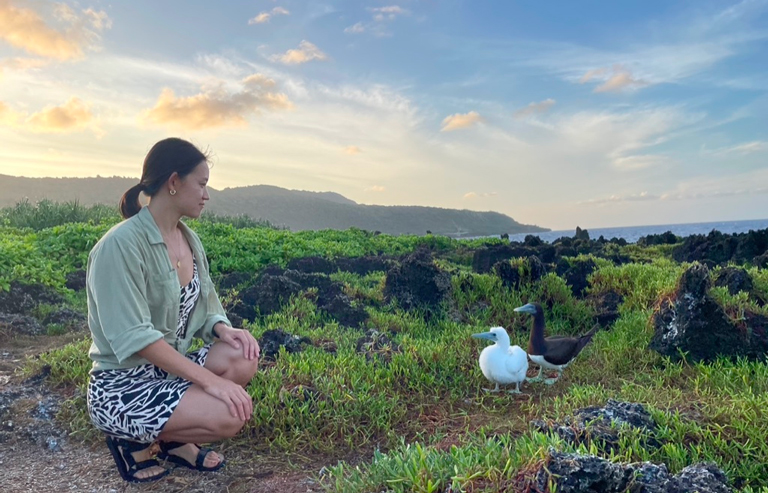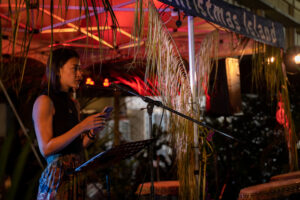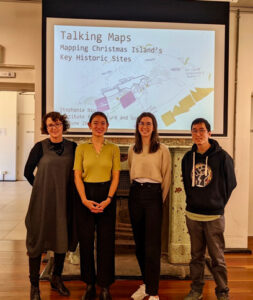Inspiration and Affirmation on Christmas Island

Stephanie Niu, 2021 Fulbright U.S. Postgraduate Scholar
Returning to Christmas Island was a dream of mine for several years.
I first visited in 2018 through an undergraduate research grant that permitted me time and funds to produce an audio podcast exploring human and animal migration. I was concluding my undergraduate degree in symbolic systems and about to begin my master’s program in computer science; my trip to Christmas Island was a rare opportunity to engage with a new place in a creative capacity rather than a technical one, to be explicitly tasked with learning by listening.
During that first visit, the island’s unique geographic and social landscape sparked and expanded my imagination. I felt keenly that the world’s possibilities were far greater than I had previously thought; on the island, I could be the person I had in many ways dreamed of being– a creative researcher, propelled forward by their own questions and by the act of discovery rather than the mandate of a private corporation or a technical spec. Although I already had plans by then to enter the private sector in information technology after graduation, I couldn’t let my dream of Christmas Island go. I resolved to give myself another chance to be that creative researcher I felt myself become in 2018. 
My year on Christmas Island fulfilled these dreams and more. Although I often experienced self-doubt and the sense that I was merely playing at research, tricking the public into believing my work was legitimate, I was surrounded by Islanders and friends who cared deeply about my well-being and validated the importance of my work.
 During a midpoint visit to Western Sydney University, I presented the progress on my research to the Institute of Culture and Society. The week after my presentation, an incredible humanities researcher presented her work on Antarctic architecture. I found myself inspired and humbled by the depth of her engagement with her topic and said so after her talk. “I drew inspiration from your work,” she told me cheerfully, “and I shared your project with my lab! They love it!”
During a midpoint visit to Western Sydney University, I presented the progress on my research to the Institute of Culture and Society. The week after my presentation, an incredible humanities researcher presented her work on Antarctic architecture. I found myself inspired and humbled by the depth of her engagement with her topic and said so after her talk. “I drew inspiration from your work,” she told me cheerfully, “and I shared your project with my lab! They love it!”
Although a small acknowledgement, experiences like this one continued to affirm the possibility that creative research could be a mode for making sense of the world, a mode that had space for me.

My year on Christmas Island included many firsts, creatively, professionally, and personally: I designed and ran a photo exhibit as an experiment in community archiving, published a ‘zine, taught poetry, performed at events like the Bankstown Poetry Slam, wrote research-based articles for the local paper, and tried collage-making for the first time. I felt my knowledge of my creative capacity expand as I explored new ways to engage with the past and my existing creative practices.
I also got certified in freediving, speared and prepared my first fish (Malay-style leatherjacket, with plenty of tamarind paste), foraged for seasonal fruit, learned to surf on Bondi Beach, and made lasting friendships.
The Fulbright allowed me to expand my understanding of who I can be, and I’m excited to take this knowledge into the next phase of my life.
Copyright © 2021 – Fulbright


 Facebook
Facebook Twitter
Twitter Linkedin
Linkedin Instagram
Instagram